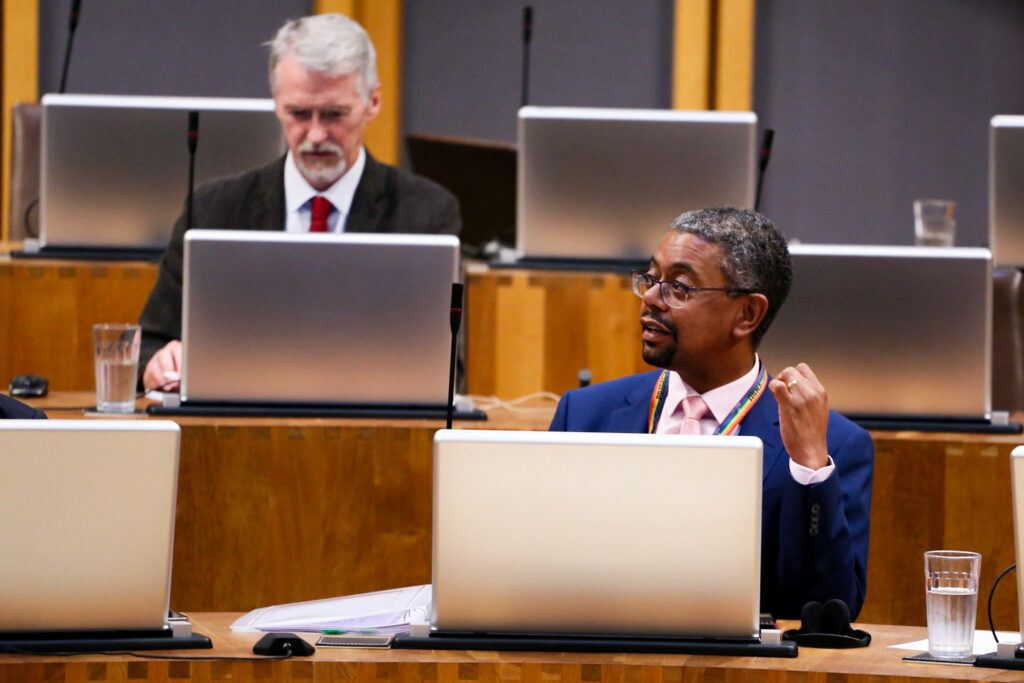John Osmond follows the visions of one of Wales’s most inspirational 20th Century historians in a new book on the connections between Dowlais and Hughesovka.
Through much of the 20th Century many on the Left in Wales felt an emotional attachment with Russia and the 1917 revolution that created the Soviet Union. It seemed to offer hope for another way to the seemingly effortless hegemony of the capitalist West. Foremost among those who clung to this vision was the Marxist historian Gwyn Alf Williams who preferred to be known as his people’s ‘remembrancer’. Born in Dowlais in 1925 he joined the Communist Party as a teenager, partly inspired by the anti-Fascist Popular Front during the Spanish Civil War, but also by Soviet Communism.
Gwyn was a dreamer, so it is appropriate that a book just published that is so filled with his presence is entitled Dreaming a City. The author, film producer and director Colin Thomas, acknowledges at the outset that Gwyn’s “ghost walks through the pages of this book”. The subtitle is From Wales to Ukraine and it is essentially an account of the making of the Russian city Hughesovka during the late 19th Century and the events that followed. After the 1917 revolution the city morphed into Stalino, not because it was named after Stalin but because it was a steel-making town, a city of steel. Today it has become Donetsk, in the Donbass region of independent Ukraine.
There are two Welsh connections in this story. The first is John Hughes, the Welsh entrepreneur who founded the town in the 1870s along with some 70 steelworkers drawn from across south Wales. In itself this is a remarkable story. Hughes was born and brought up in Merthyr as a working man under the control of William Crawshay and dreamed of becoming such a powerful figure himself. He made the dream a reality in Czarist Russia.
Colin Thomas’s book is part history with Hughesovka’s experience being in microcosm an account of the Soviet Union, part reflections on documentary film-making, part travelogue, and part a fond look back at Gwyn Alf, one of the most remarkable Welshmen of 20th Century Wales. It is he who provides the second Welsh connection.
In the television documentary Gwyn and Colin made, Hughesovka and the New Russia which is included as a DVD with the book, you witness his coming to terms with the harsh and bitter realities of Soviet Communism. The climax occurs in some remarkable scenes in the film when Donetsk miners accompany him underground in the Gorky pit just outside the city and take him seven miles to the coalface, and more than 100 years back to the 19th Century mining conditions of the Welsh coalfield.
All this took place at the end of the 1980s, when Perestroika was signaling the revolution of 1989, the end of the Cold War and the end of Communism itself. You see Gwyn Alf Williams struggling to come to terms with all of this, the end of his own delusions, and wondering what will fill the void. The certainties of a lifetime are slipping from under his feet. Remember, too, that it was also the end of a decade in which he had published When Was Wales. This was his account of the television series The Dragon Has Two Tongues, directed by Colin Thomas, in which he had seen and recorded nightmare visions of the end of Welsh aspirations for a national future. In a remarkable piece to camera at the close of the Hughesovka film Gwyn is plainly thinking about his own homeland as well as talking about Ukraine:
“The people here come stumbling out of the carapace of Stalinism. They grope after freedom, sufficiency, dignity, while all around gibber black monsters out of Russia’s dark past. Many now stampede after the market as their salvation. The market has been proved an essential. But an unfettered market made an even bigger mess in the Third World than Communism has here. In the ’30s the market almost eliminated my people from history. In that time of misery and anger many of us looked towards this place as a life-giving alternative. That was a delusion but now here in their stampede towards the market they are talking about closing every pit in the Donbass. Good God! Is the market going to kill this great city like it killed our coal industry?”
Gwyn, of course, was a powerful advocate for a National Assembly for Wales – his final line in the Dragon Has Two Tongues series was “We will live if we act”. He died a decade later in 1995. Colin Thomas, who has travelled his own journey with the hopes and disappointments of Communism, records how at his funeral the Internationale was sung along with O Iesu Mawr. Gwyn was a pessimist, but along with Gramsci he sustained an optimism of the will. He would have been delighted to have seen the referendum result in 1997. He might have even thought that the Ukraine could take inspiration from Wales.





Readers interested in the story of John Hughes and Hughesovka may like to read my book ‘The Iron Tsar’ recently published by Penpress @ £8.99.
ISBN13: 978-1-907499-17-3